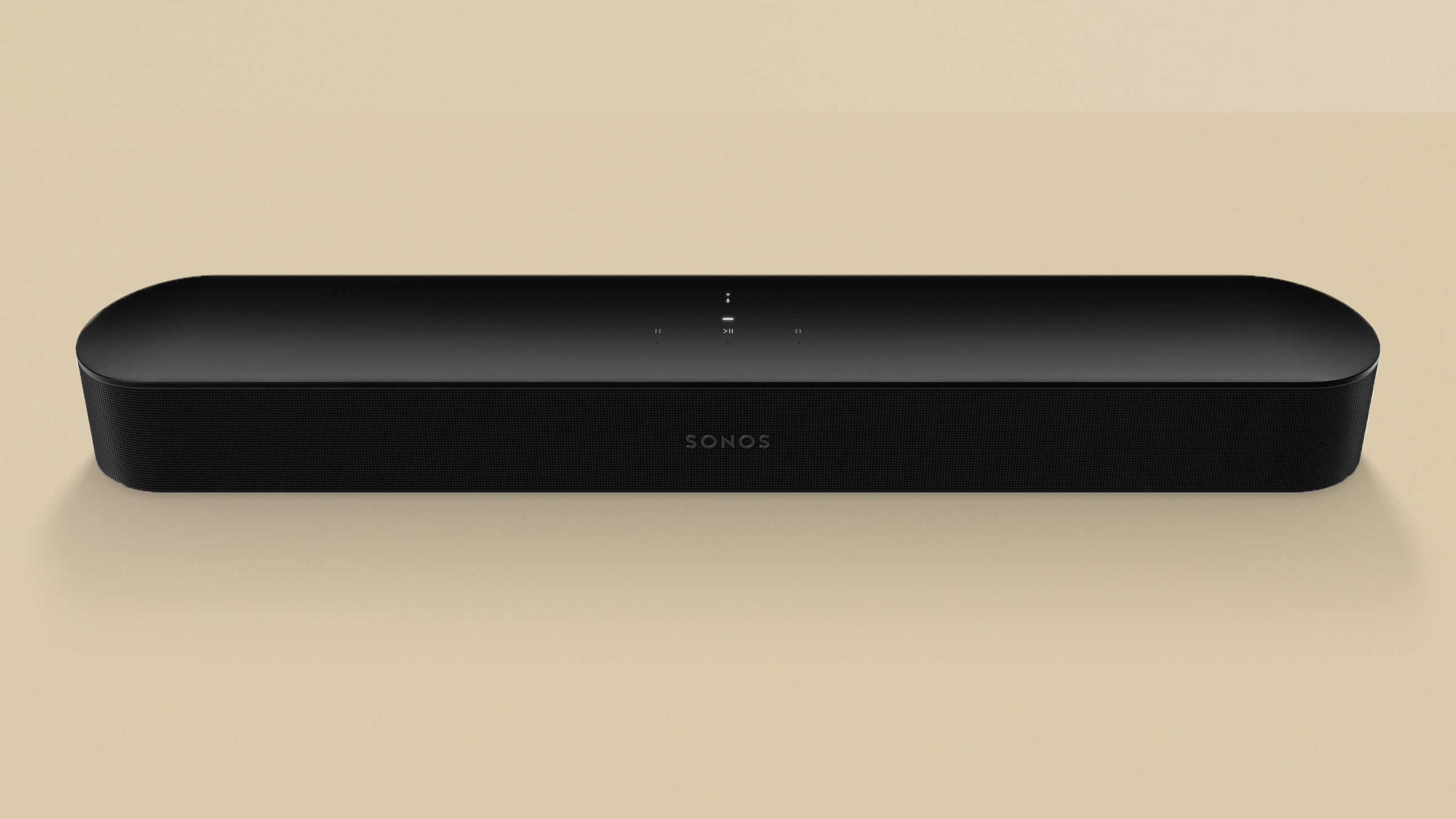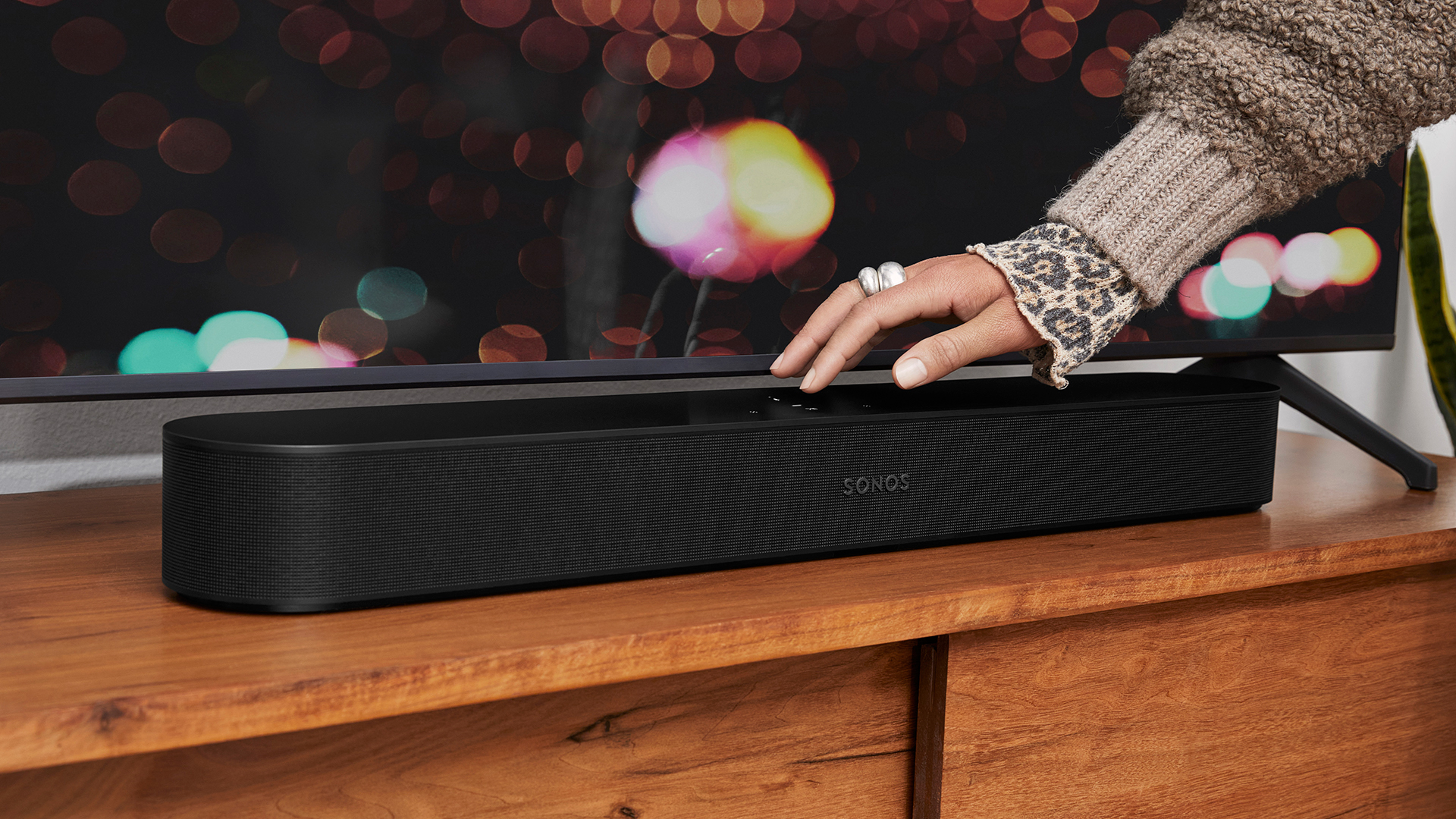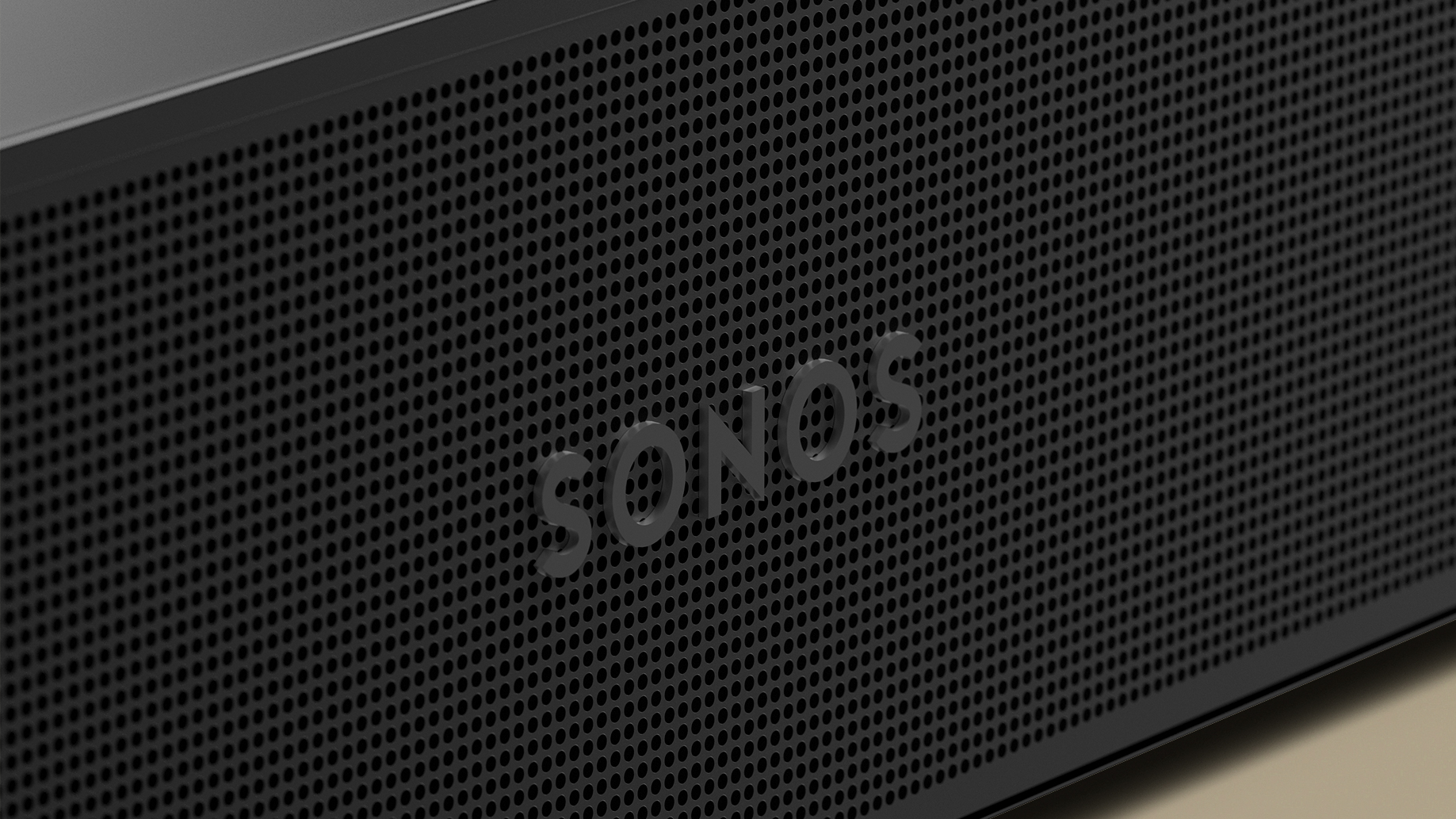Sonos Beam (2nd Gen) review: impressive Dolby Atmos from a cheap soundbar
The Sonos Beam 2 offers more deft and refined sound than most affordable soundbars, and now brings the bigger audio of Dolby Atmos


The Sonos Beam 2 delivers delivers mild but definite improvements on the (outstanding) product it replaces, with performance that defies its dimensions. It’s not quite as emphatically Dolby Atmos-y as might have been hoped, and the lack of HDMI passthrough may be a problem for you, but the sound quality for smaller TVs is just fantastic.
-
+
Deft, poised and weighty sound
-
+
Expansive and well-defined presentation
-
+
Good control options and app
-
-
No HDMI passthrough
-
-
Not the sonic height you might hope for
Why you can trust T3

This Sonos Beam 2ng Gen review takes a look at and a listen to the hotly anticipated update to one of our favourite soundbars. It replaces one of Sonos’ most successful products, the Beam, and adds a few high-profile functions including compatibility with Dolby Atmos soundtracks.
The original Sonos Beam was absolutely one of the best soundbars around, particularly because it brought really high audio quality in a size small enough for compact TVs, which is not so common among other soundbars from big brands.
The Beam Gen 2 is the exact same size, but breaks new ground by including Dolby Atmos in such a small body, and consequently should prove appealing to those without either the space or the inclination to accommodate a whacking great soundbar.
And it sounds fantastic, bringing the same quality and nuance to your TVs audio, but now with extra width and the extra position that a Dolby Atmos soundtrack can deliver.
Sonos Beam (2nd Gen) review: Price & release date
The Sonos Beam Gen 2 goes on sale on October 5th 2021, and it’s priced at £449/$449/AU$699.
In the UK, that’s £50 more expensive than the original Beam when it launched three years ago. And if our experience has taught us anything about Sonos, it’s that discounts are unlikely to be all that generous or all that quick in coming – you'll likely pay that price.

Sonos Beam (2nd Gen) review: Features & what's new
Both inside and out, the Sonos Beam Gen 2 is very similar to the product it replaces – but where there are differences, they are pretty significant.
Get all the latest news, reviews, deals and buying guides on gorgeous tech, home and active products from the T3 experts
The headline, obviously, is the Beam 2’s compatibility with Dolby Atmos soundtracks. There's been no change to the the driver array or amplification – like the previous Beam, Gen 2 features a single tweeter, four ‘racetrack’ mid/bass drivers and three passive radiators for low-end reinforcement, driven by five Class D amplifier blocks of unspecified power.
But the on-board processing here is massively more powerful than that in the original Beam, and this allows Sonos to deploy some potent digital sound processing in an effort to extract meaningful height, as well as width, to the Gen 2’s presentation.
Another important change – essential, really, when you consider this is now a Dolby Atmos soundbar – is the inclusion of eARC HDMI functionality. There are just three physical inputs at the back of the Beam Gen 2: eARC HDMI, Ethernet and power.
The one disappointment is that there’s still no HDMI passthrough, which makes Beam Gen 2 a less universal product that it otherwise would have been. It means that if you use it with a TV that doesn't have Dolby Atmos decoding, you may not get the full effect of its audio capabilities. It also means that one of your TVs precious HDMI ports is dedicated solely to this soundbar, which might be limiting.
Otherwise, the most obvious change is decorative. The Gen 2 retains the same dimensions as the outgoing Beam (a tidy 651x100x69mm, which was an important part of the original Beam’s appeal, and means it's a good size for 32-inch TVs, 43-inch TVs or even 50-inch TVs), but it now features the polycarbonate grille Sonos debuted on the bigger and more potent Sonos Arc soundbar.
In either finish (black or white are available), the Beam Gen 2 is a discreet, good-looking and flawlessly finished product. The new grille is easier to dust, which is definitely a nice upgrade for any TV equipment, give how it always ends up.
There’s a significant point of difference incoming, too. At launch it won’t be available, but Sonos promises that compatibility with Amazon Music – both its 24bit/48kHz ‘HD’ content and its Dolby Atmos audio files – will be happening “soon”.
And, fundamentally, that’s your lot. We’ll deal with Beam Gen 2’s numerous control options in the ‘Design and Usability’ section of this review – so for now will go out more-or-less the same way as we came in: by saying Gen 2 is very similar to the original Beam, except for where it’s different.

Sonos Beam (2nd Gen) review: Performance
The stakes are always high for a company like Sonos, of course, but Beam Gen 2 is a replacement for a product many hold to be the single most impressive in the company’s entire catalogue. So it’s probably worth cutting right to the chase: the Sonos Beam Gen 2 is a high-performing, well-realised product that’s more than ready to take on the mantle of ‘The Best Sonos Product’.
Of course, it’s not perfect. What is? So we may as well start with those areas where it falls fractionally short. This won’t take long.
If we’re being charitable, the height effect when listening to a Dolby Atmos movie soundtrack is subtle. If we’re being uncharitable, it could be a lot more assertive. Oh, there’s unarguably greater height to the sound here than the original non-Atmos Beam could hope to generate – but it’s not especially pronounced, and you’d certainly never confuse it with true overhead sound.
But as long as you’re not expecting the sort of audio power that the giant and expensive Samsung HW-Q950A or Sennheiser Ambeo produce, the height and width of the Gen 2’s presentation ought to prove satisfactory. And in every other respect, ‘satisfactory’ is severely understating the Sonos’ performance.
Tonally, the Gen 2 is expertly judged. Yes, you can hinder the balance by getting carried away with EQ adjustments, but leave TruePlay to do its thing and the result is a very pleasing mixture of heft and dexterity. There’s no doubt its tonal characteristics can be affected by the source, though – Netflix, for example, is generally a cleaner and leaner listen than broadcast TV.
But in pretty much every circumstance the Sonos is an uncluttered and detailed listen, convincingly balanced and able to generate meaningful low-frequency presence without impacting on the midrange. Of course it’s easy to integrate a Sonos subwoofer into your Beam Gen 2 system, but for listeners in average-sized rooms listening at average volume levels, it’s by no means a necessity. And also, the Sonos Sub is hideously expensive considering how well-priced this soundbar is.
The mid-range itself is deftly communicative, and voices project forward from the rest of the action without becoming in any way estranged. The finer details of vocal timbre, of tongue and palate sounds, of straightforward character, are made plain. And despite being delivered by just a single lonely tweeter surrounded by far beefier drivers, the top of the frequency range is crisp and assertive – it shines without ever getting edgy or hard, even at volume. And the Beam Gen 2 is capable of significant volume.
As well as small harmonic variations, the Beam Gen 2 is perfectly capable of dealing with the big dynamic shifts so beloved of the Hollywood soundtrack. It will put considerable distance between ‘protagonist sneaks away’ and ‘protagonist’s explosives all go off at once’, and is capable of putting considerable distance between you and the seat you were sitting on. If it’s a bit of shock and awe you want from your movie, the Sonos will make you happy.
And despite not really being able to make good on the overall height of an Atmos soundtrack, it’s perfectly capable of generating a wide, respectably deep soundstage and putting proper distance between the ‘wide left’ and ‘wide right’ extremities. Just like the original Beam, the Gen 2 sounds way wider than its physical dimensions.
Switch to some music (the Sonos S2 app can incorporate an absolute stack of services, and Apple AirPlay 2 is supported) and the story is, broadly speaking, similar. It’s nicely neutral in terms of tonality, it has greater low-frequency presence and control than seems likely, and it doesn’t hang around where tempos are concerned.
Yes, it could be more fluently expressive of rhythms and yes, it could sound more unified – but by the standards of budget soundbars that want to be music-makers too, the Beam Gen 2 is a good effort. Anyone expecting meaningful stereo separation is going to be thwarted by just how obvious the point-source of music is, but anyone who wants to keep speaker intrusion into their room to a minimum while enjoying some music will find the Sonos a fairly easy compromise to make.

Sonos Beam (2nd Gen) review: Design & usability
As we’ve already observed, with the exception of the grille material the Beam Gen 2 is, in design terms, really very similar indeed to the outgoing Beam. Which means it’s a usefully compact, beautifully built and nicely finished soundbar. It’s hard to make a case for the design of a product as functional as this, but the design of the Sonos Beam Gen 2 is about as agreeable as these things ever get. And it comes in white or black, which is more than most soundbars offer.
And as far as usability goes, well, you’re spoiled for choice. The Sonos S2 control app remains the gold standard where these things are concerned: it’s logical, legible, stable and so simple to use you just know it cost a fortune to develop. As a brand, Sonos is well on the way to ubiquity – and the quality of its control app is a big part of why.
Of course, control is available via your TV’s remote control over HDMI (which will be the main control method) or via your favourite music-streaming apps. Reliable voice control is available via Amazon Alexa or Google Assistant, or use Apple AirPlay 2 or the suite of capacitive touch-controls on the Beam 2’s top surface. Basically, if you can’t get the Sonos Beam Gen 2 to do what you want, and at the first time of asking, we’re confident the problem is with you rather than with the product.
Sonos has incorporated its TruePlay room equalisation here, and it does a very decent job of optimising the Beam Gen 2’s sound to suit your specific environment. Of course, there’s the opportunity to adjust EQs too (bass, treble and ‘loudness’), but the implementation of TruePlay here is perhaps Sonos’ most successful yet.
Sonos Beam (2nd Gen) review: Verdict
Let's be clear: the Sonos Beam 2nd Gen doesn't give you full-on Dolby Atmos. You have to spend a lot more for that, and go a lot bigger, usually.
But if ‘all’ you want is big, bold and well-realised movie sound from a compact, high-performance soundbar, Sonos has just replaced its best product with its best product.
The only issue is the lack of HDMI passthrough, which may mean it's not the best choice for some TVs with limited HDMI ports or no on-board Atmos support – if that's you, we've got a suggestion below.
But for everyone else, the Sonos Beam is a best-in-class product. Big sound comes from a soundbar compact enough for small TVs and tight living room spaces.
Sonos Beam (2nd Gen) review: Also consider
It’s not quite as elegant a proposition as the Sonos Beam Gen 2, mostly because of its separate wireless subwoofer and its noticeably bigger soundbar. But the Sony HT-G700 costs more-or-less the same as the Sonos, has compatibility with DTS:X object-based soundtracks as well as Dolby Atmos, has a HDMI passthrough (supporting 4K HDR) and will most certainly put a profound rocket up your favourite movie soundtracks. Not as poised or as deft as the Sonos, but might be a better choice in some cases. Here's our full Sony HT-G700 review.
If you want full Dolby Atmos height and everything else from Sonos, then look to its (much bigger) Sonos Arc soundbar. This is for TVs of 55 inches and higher, but it packs a ridiculous array of speakers, including up-firing ones, for astounding positional audio and dynamic power. It also inexplicably has a single HDMI port (so no passthrough), but for audio quality, it's just glorious. Here's our full Sonos Arc review.
Simon Lucas is a freelance technology journalist and consultant, with particular emphasis on the audio/video aspects of home entertainment. Before embracing the carefree life of the freelancer, he was editor of What Hi-Fi? magazine and website – since then, he's written for titles such as Wired, Metro, the Guardian and Stuff, among many others. Should he find himself with a spare moment, Simon likes nothing more than publishing and then quickly deleting tweets about the state of the nation (in general), the state of Aston Villa (in particular) and the state of his partner's cat.
